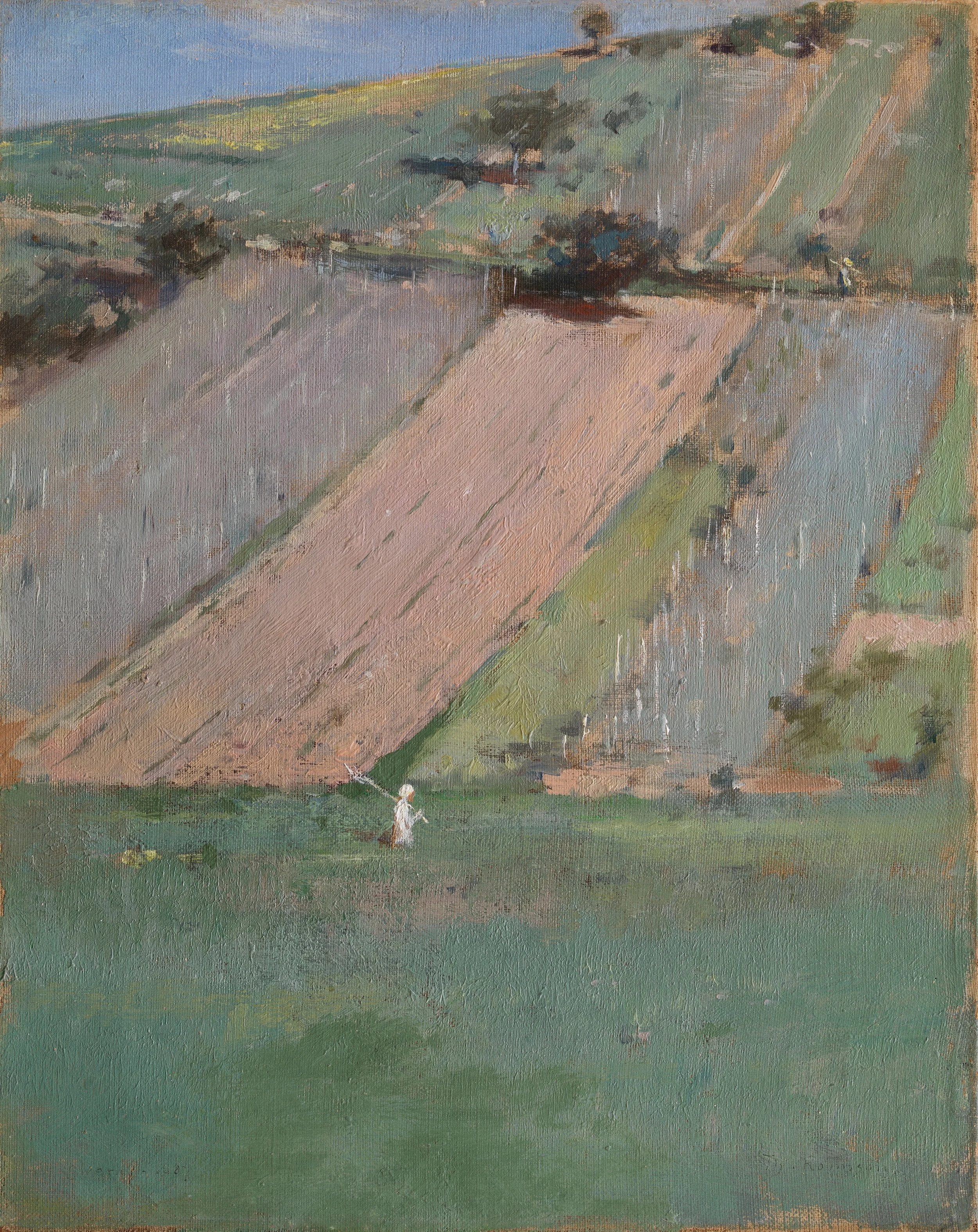Plein Air Painting: Art in the Open Air
A Hillside, Giverny by Theodore Robinson
For centuries, the practice of plein air painting has offered artists an intimate communion with the natural world. From its origins as a radical departure from studio-bound artistry to its enduring appeal in our digital age, plein air painting remains a profound exercise in observation and expression. The term itself, derived from the French phrase en plein air, translates to "in the open air," encapsulating both its method and ethos.
A Brief History of Plein Air Painting
The story of plein air painting begins with a desire to capture the world as it is, unfiltered by the constraints of memory or imagination. While its roots can be traced to the outdoor sketches of earlier masters like J.M.W. Turner and John Constable, plein air truly emerged as a distinctive practice during the 19th century. The Romantic movement’s emphasis on the sublime in nature set the stage for plein air's evolution, but it was the Impressionists who championed it as a central philosophy.
Claude Monet’s commitment to painting the same scene under different light conditions epitomized the plein air ethos, as did Pierre-Auguste Renoir’s luminous depictions of sun-dappled gardens. In America, the Hudson River School expanded the practice, blending realism with a sense of transcendence in their portrayals of the vast and untamed landscape. Plein air painting has since evolved into a global movement, embraced by professional and amateur artists alike for its immediacy and honesty.
Getting Started with Plein Air Painting
Beginning your plein air journey is less about having the perfect tools and more about cultivating a spirit of curiosity. However, having a well-considered kit can make the experience more enjoyable. For beginners, a lightweight aluminum easel is a good starting point, as it is portable yet sturdy. A set of primary-colored paints—red, yellow, and blue—can be mixed to create a wide spectrum of colors, while brushes of varying sizes and a palette knife provide versatility.
The initial outing is as much about logistics as creativity. Practice packing and unpacking your materials so that you feel comfortable in the field. If oils seem intimidating due to their drying time or cleanup requirements, try watercolors or gouache, which are both portable and forgiving. A small sketchpad for preliminary studies can also ease you into the practice without the pressure of producing a finished work.
Setting Up Your Space
Arriving at your chosen location, take a moment to acclimate to your surroundings. Find a spot where you can comfortably spend several hours. Consider the direction of the sun to avoid glare, as well as the wind and potential interruptions. Setting up near natural shade or carrying a compact umbrella can shield you from discomfort, allowing you to focus on your work.
Your setup doesn’t need to be elaborate. A folding chair or stool can add comfort, while a small tackle box or bag with compartments keeps materials organized. Arrange your palette so that commonly used colors are within easy reach, and secure your canvas to avoid it shifting in the breeze. Many artists also recommend bringing a small notebook to jot down notes about the time of day, weather, and lighting conditions, as these can inform your work later.
Finding Inspiration in the Ordinary
The beauty of plein air painting lies in its ability to reveal the extraordinary in the mundane. While iconic landscapes like mountains or seascapes may immediately attract your attention, some of the most compelling works emerge from overlooked details—a patch of wildflowers, the curve of a fence, or the play of light through tree branches.
Inspiration often comes from looking closely rather than broadly. Take time to observe how shadows lengthen as clouds drift overhead or how colors shift with the changing light. Engage with the environment through all your senses: listen to the rustle of leaves, feel the texture of bark, and note the scents carried by the breeze. These elements enrich your perception and enhance your ability to translate what you see onto the canvas.
For those struggling to begin, try starting small. Focus on one element of the scene—a tree, a boulder, or a section of sky—and treat it as a study rather than a full composition. This practice not only builds confidence but also trains your eye to discern subtleties in light, color, and texture.
Purposeful Plein Air Painting
Plein air painting offers a unique opportunity to engage deeply with the environment, transforming the act of painting into an act of mindfulness. Unlike studio work, where the artist controls every variable, plein air painting embraces the unpredictability of the outdoors. The shifting light, weather changes, and occasional interruptions from passersby all become part of the process, teaching adaptability and spontaneity.
For many artists, plein air painting is a form of meditation. The focused attention it demands fosters a sense of presence, encouraging the artist to slow down and fully inhabit the moment. This immersion often translates into works that feel alive, infused with the energy of their creation.
Beyond its personal benefits, plein air painting also serves a broader purpose. It invites viewers to see the world through the artist’s eyes, highlighting the beauty and complexity of nature in ways that photographs or descriptions cannot. In doing so, it fosters a deeper appreciation for the natural world, often inspiring conservation and stewardship.
Plein air painting is more than a technique; it is a way of seeing and being. By stepping outside and engaging directly with the environment, artists embark on a journey of discovery—not only of the world around them but also of themselves. In our fast-paced, screen-dominated lives, plein air painting offers a rare chance to reconnect with nature, celebrate beauty in its many forms, and practice the art of presence. Whether you are an experienced painter or a curious beginner, the open air awaits, ready to become both your studio and your muse.


